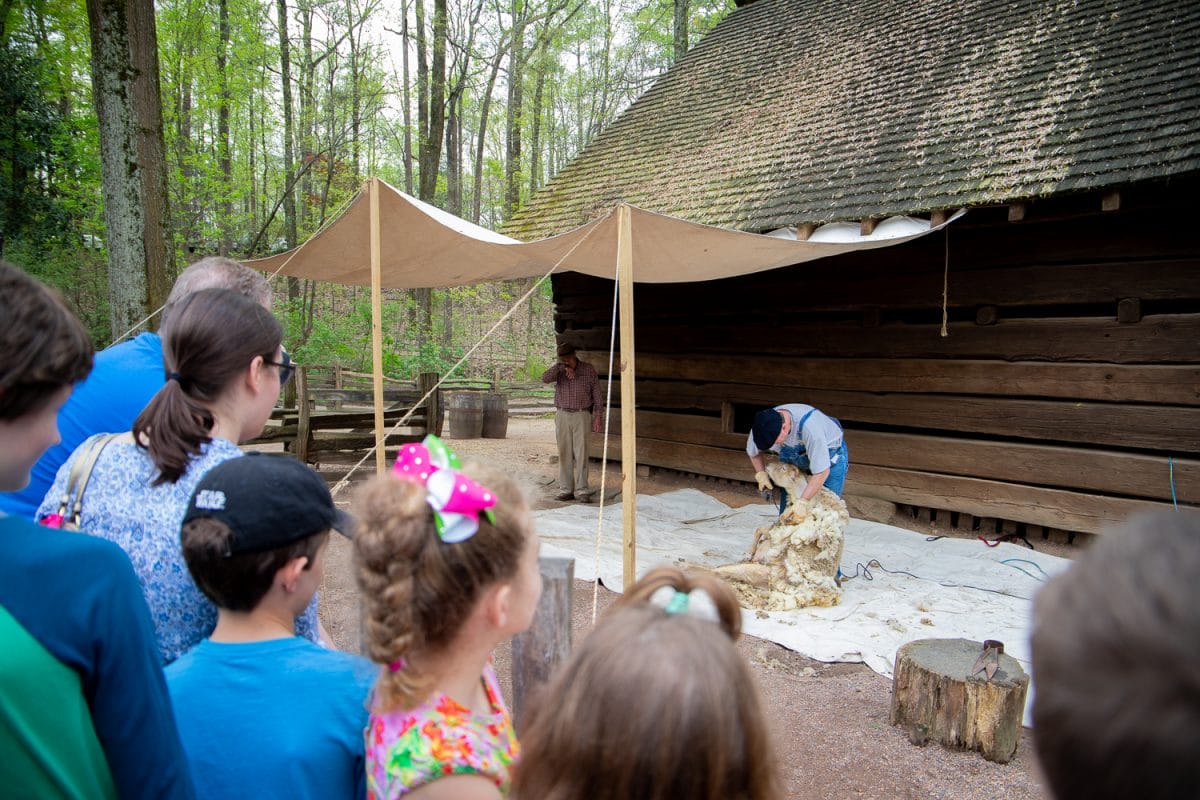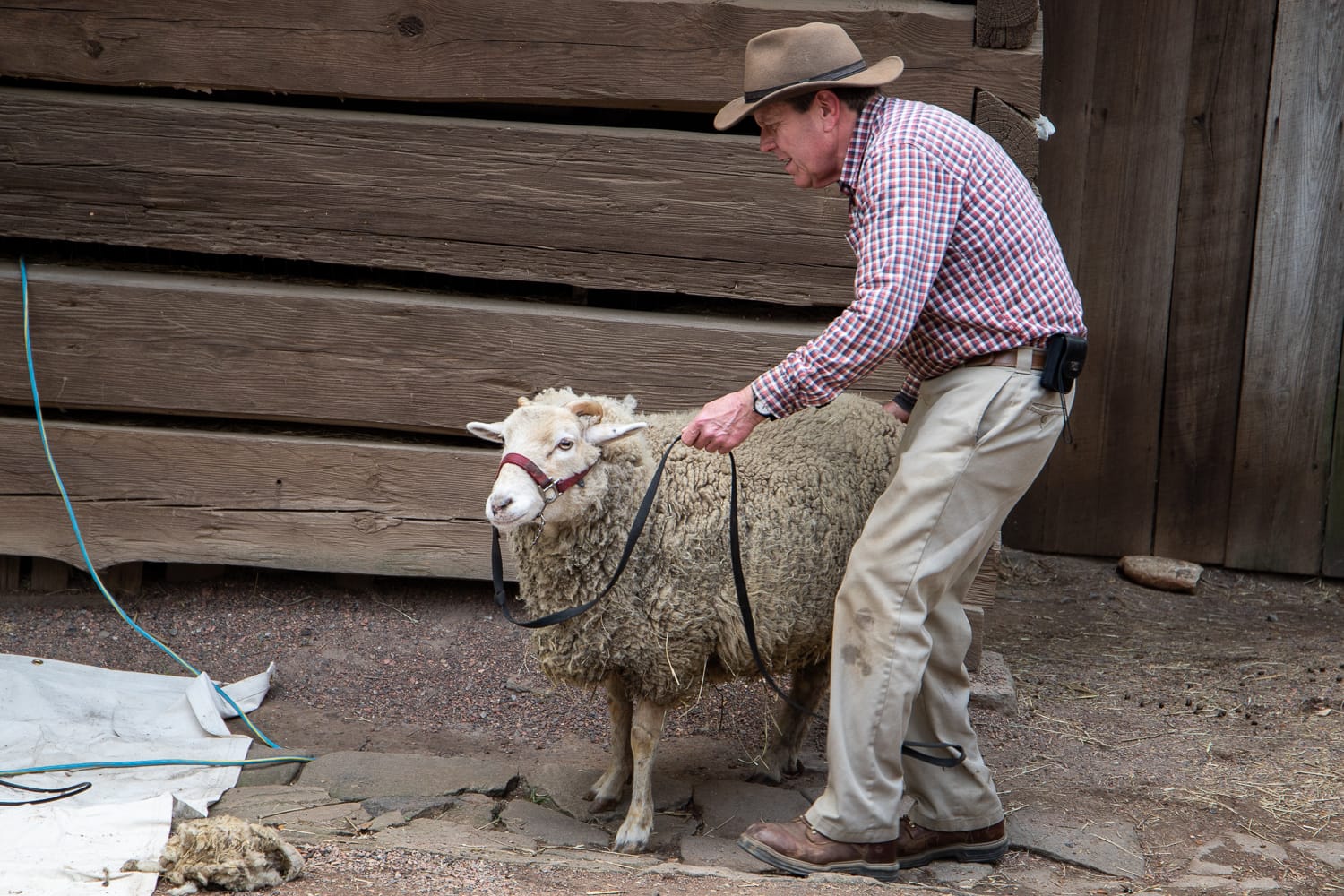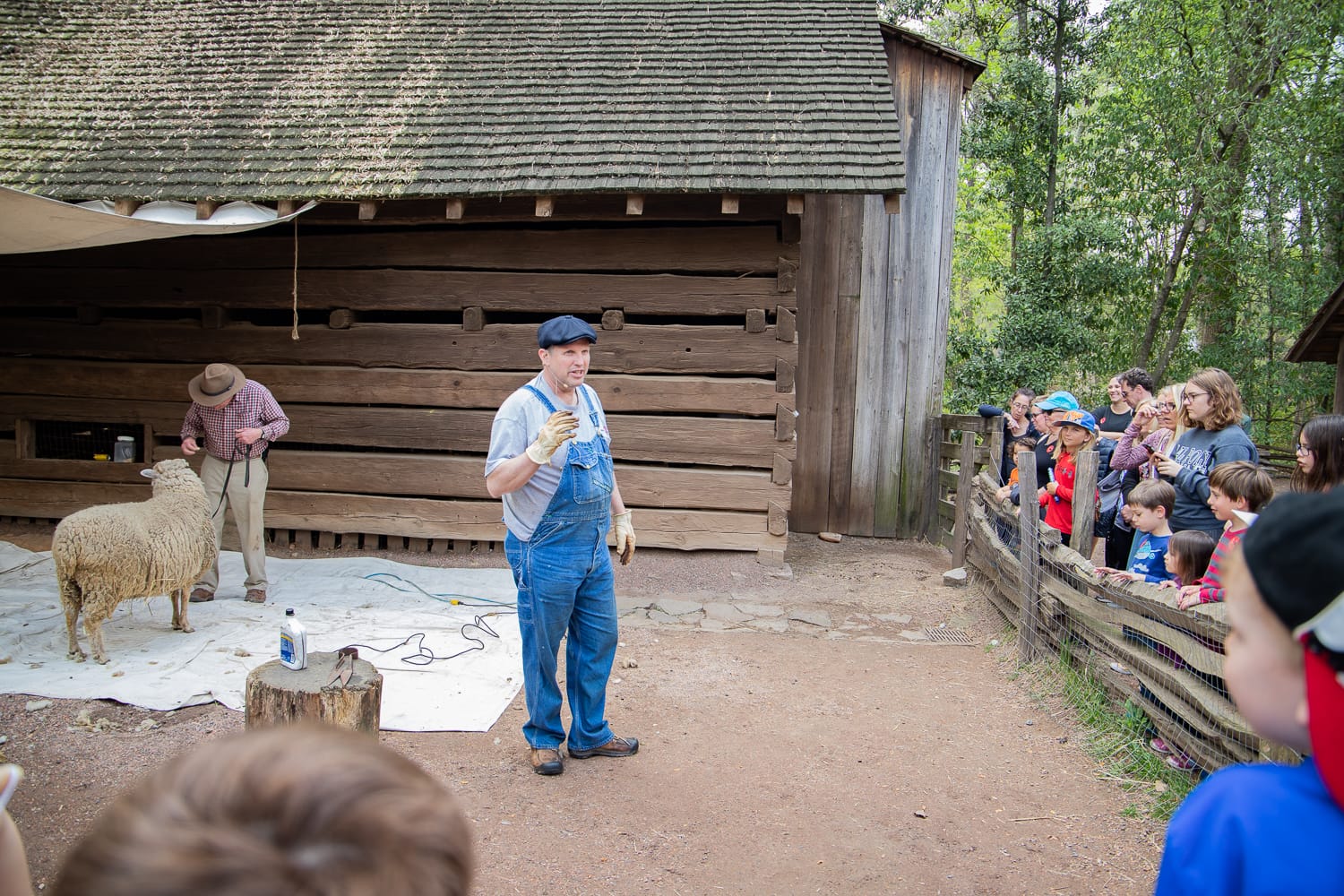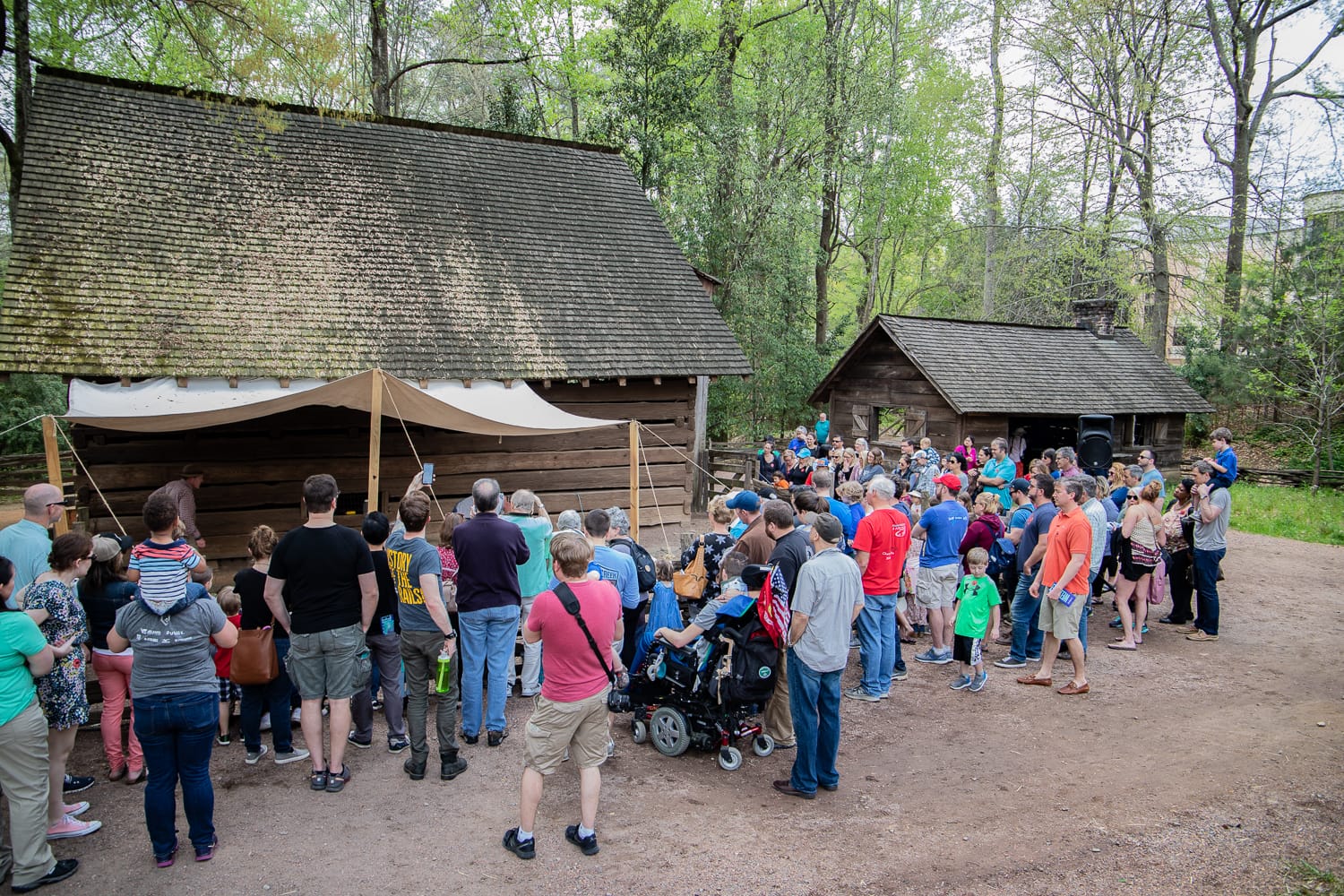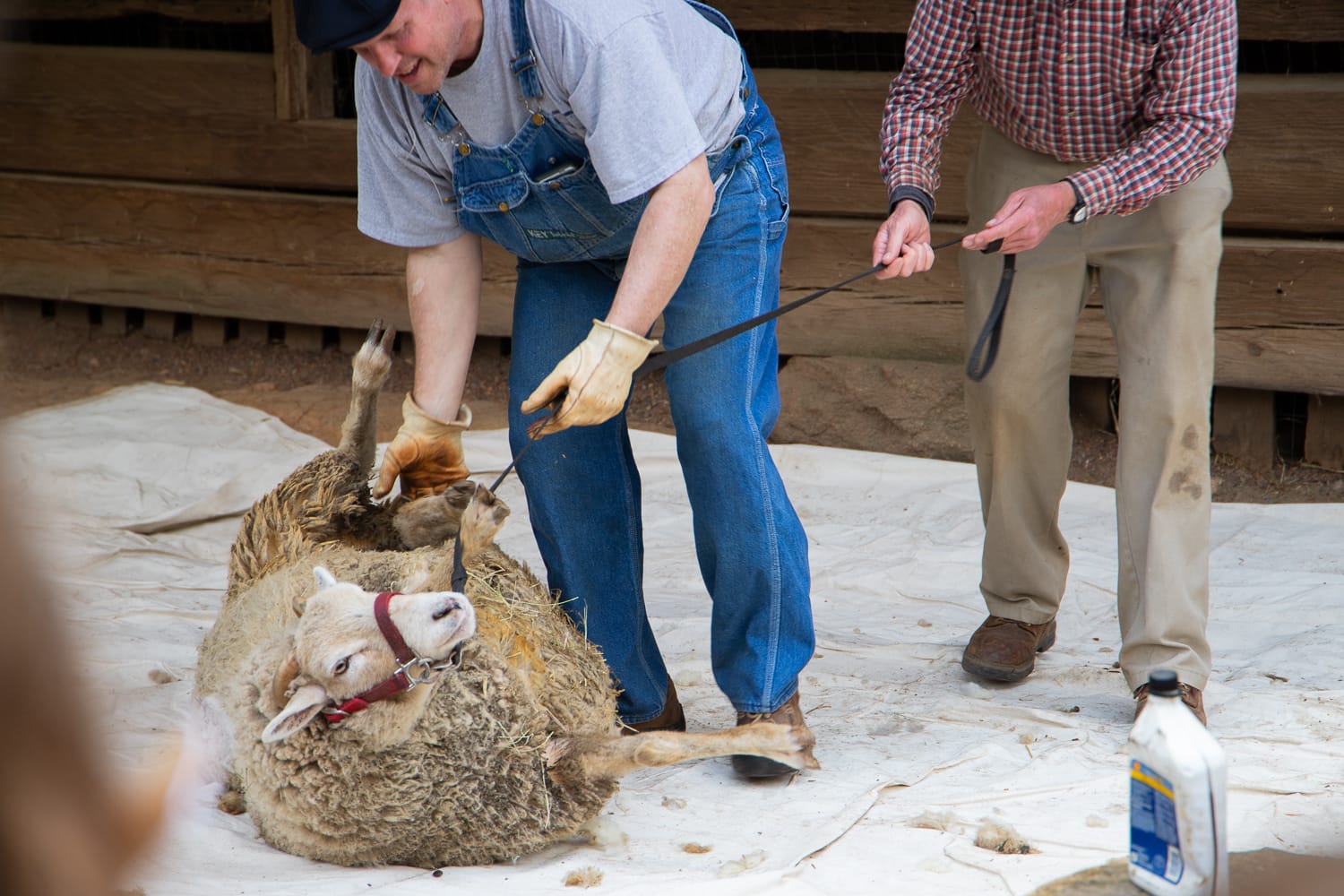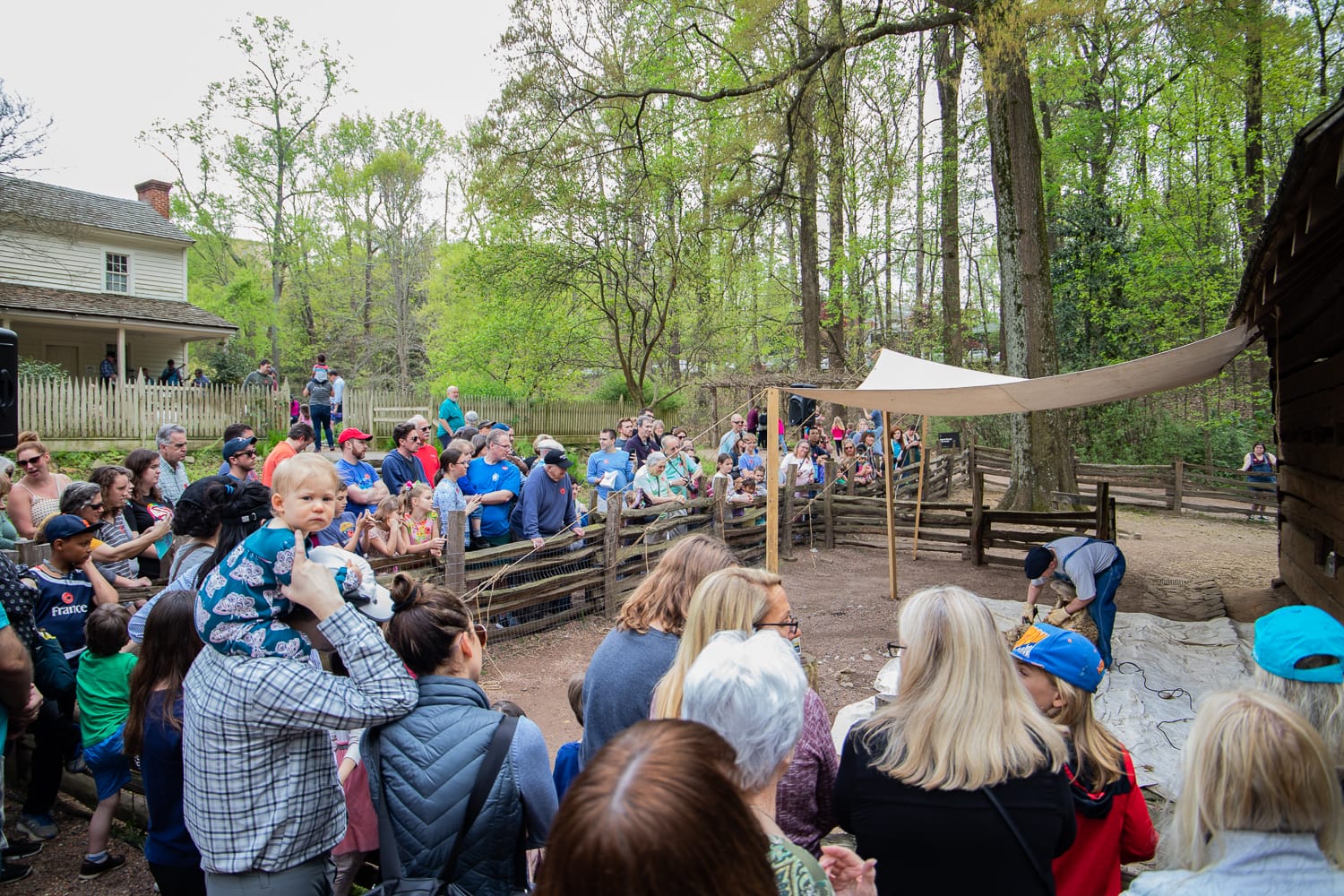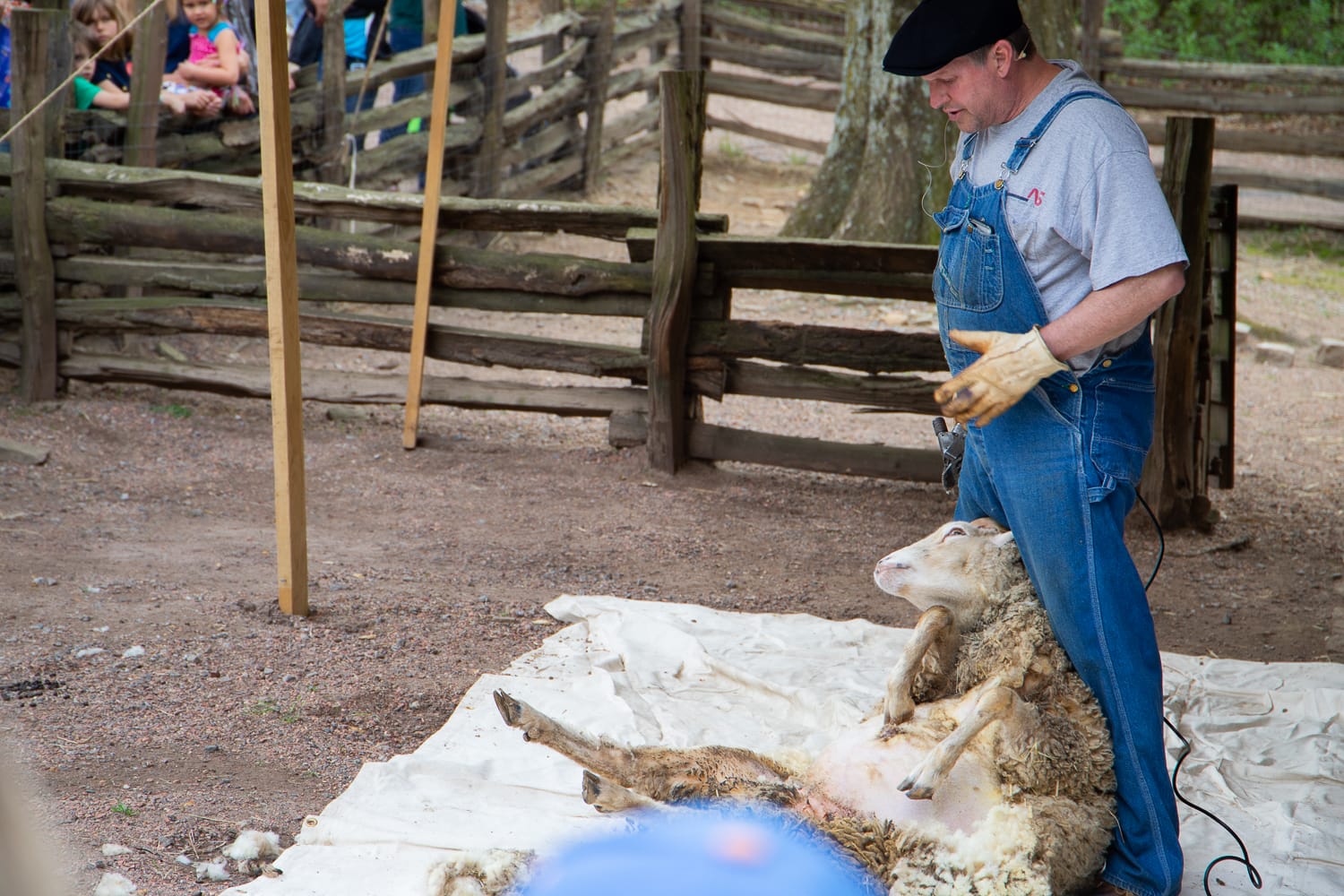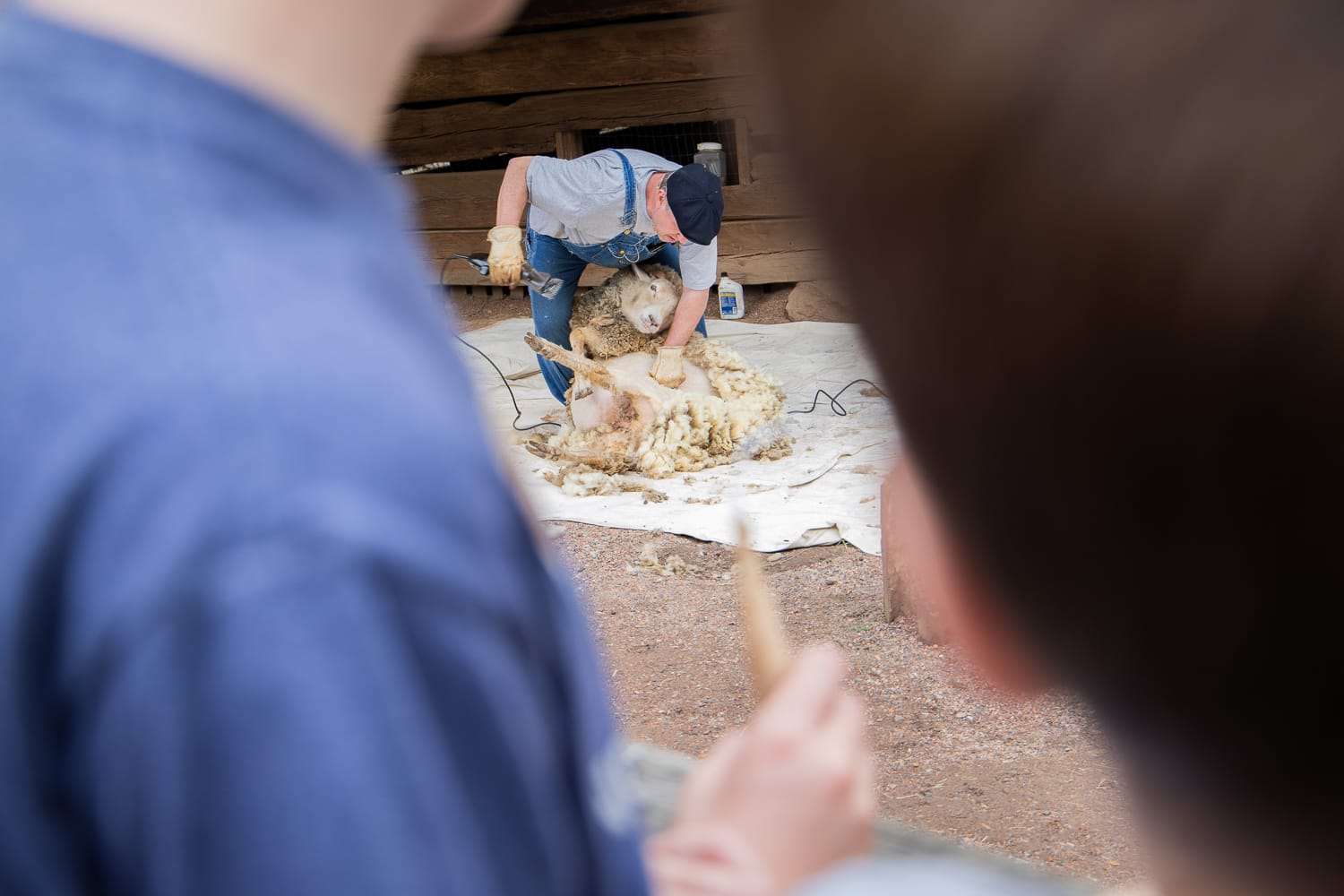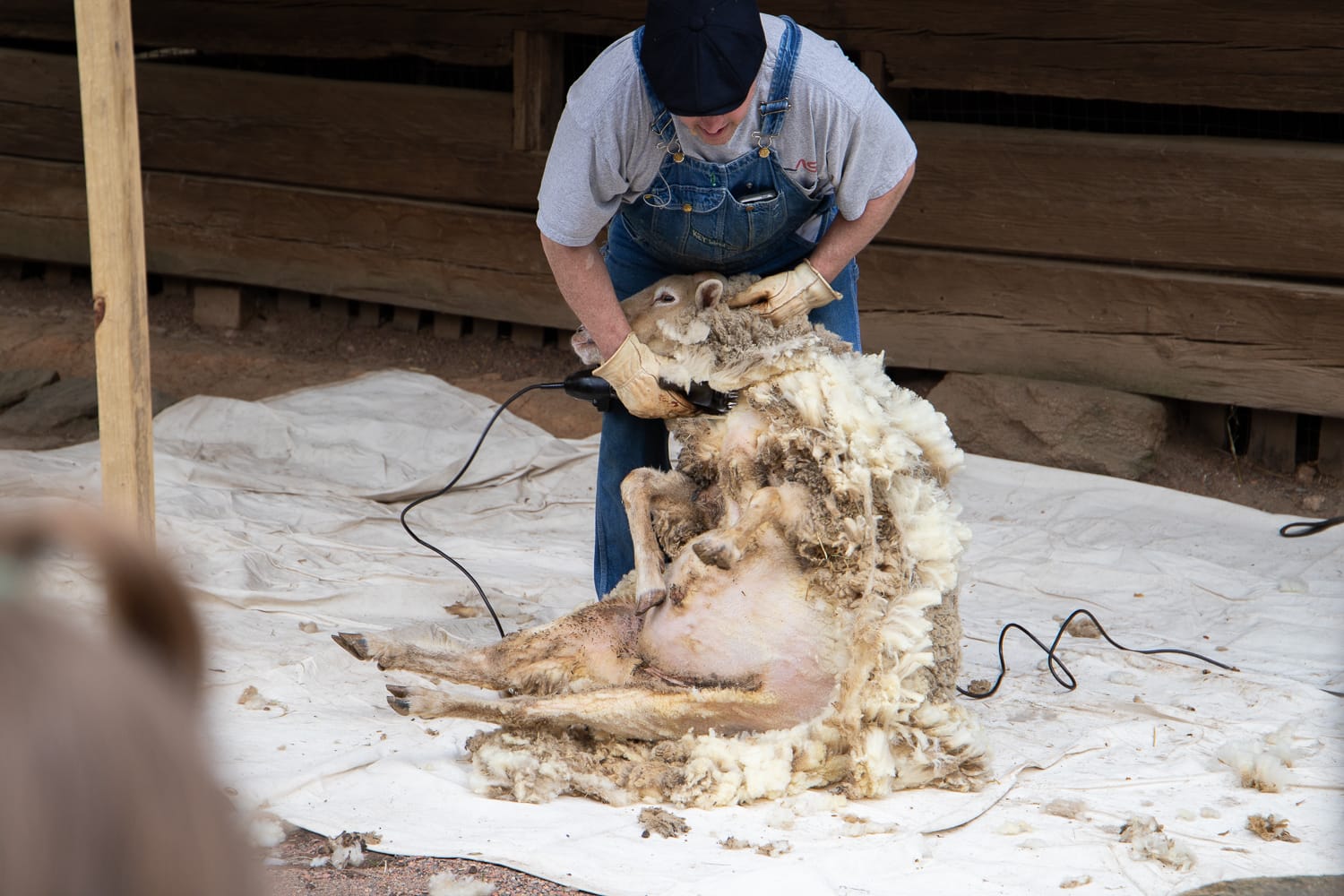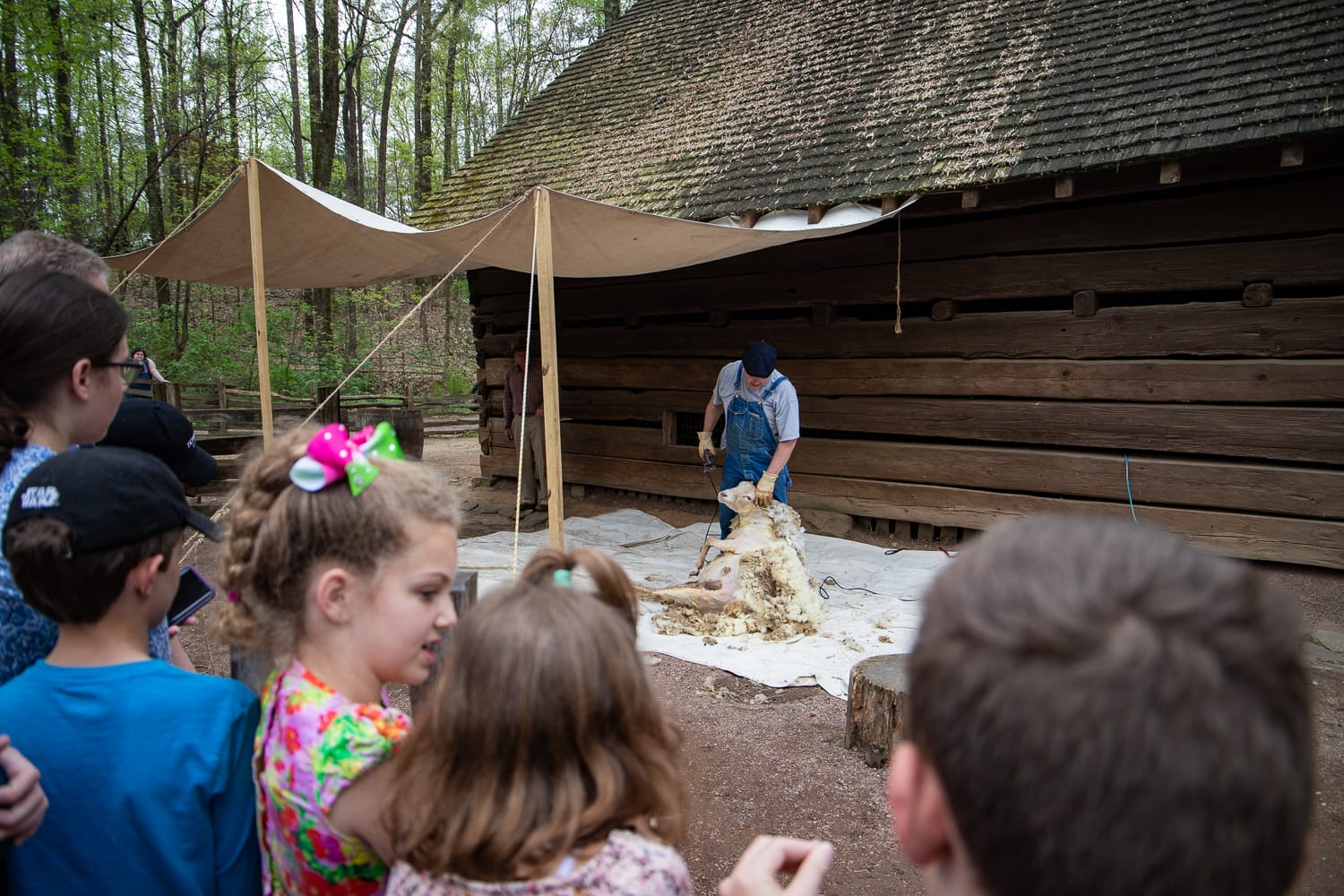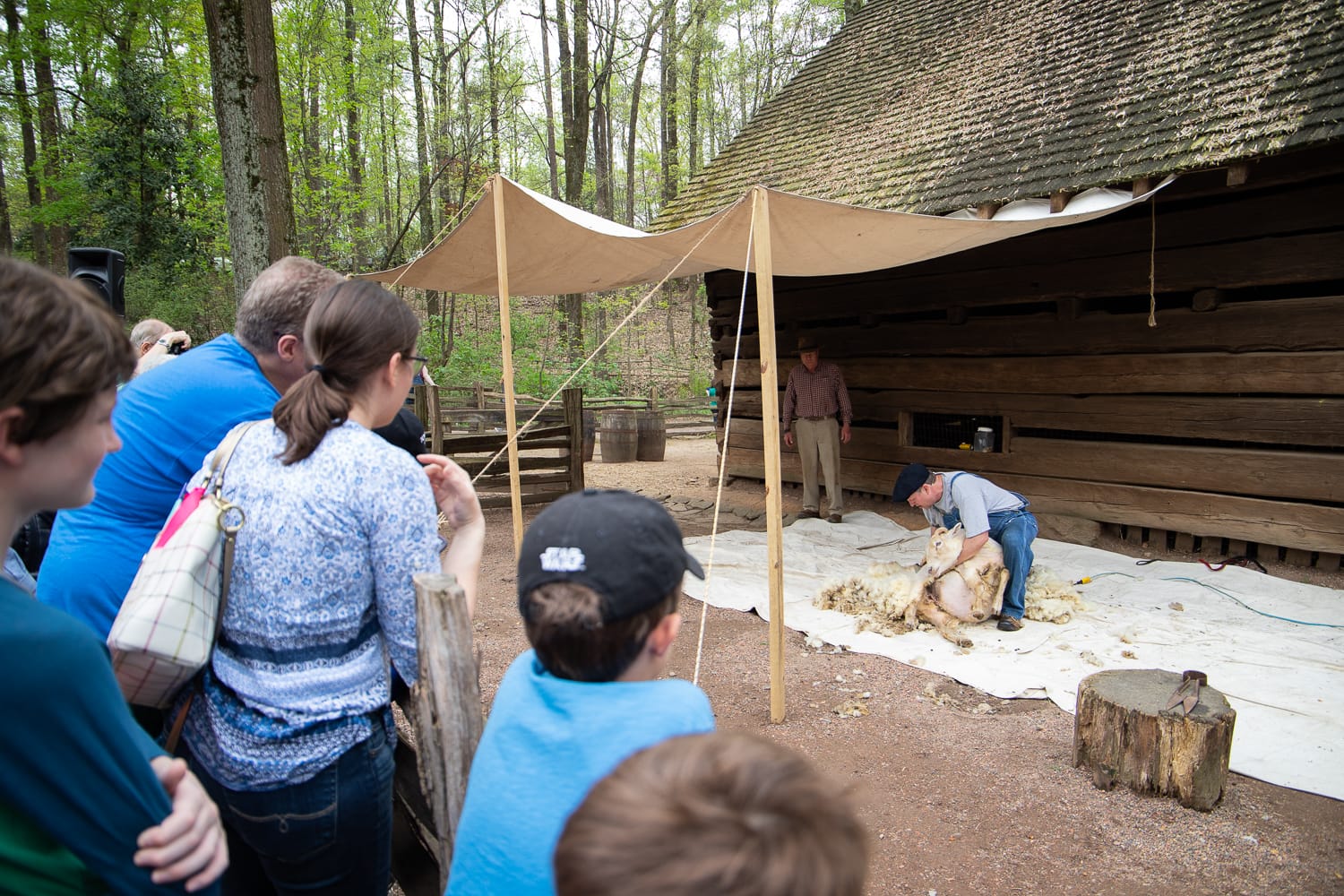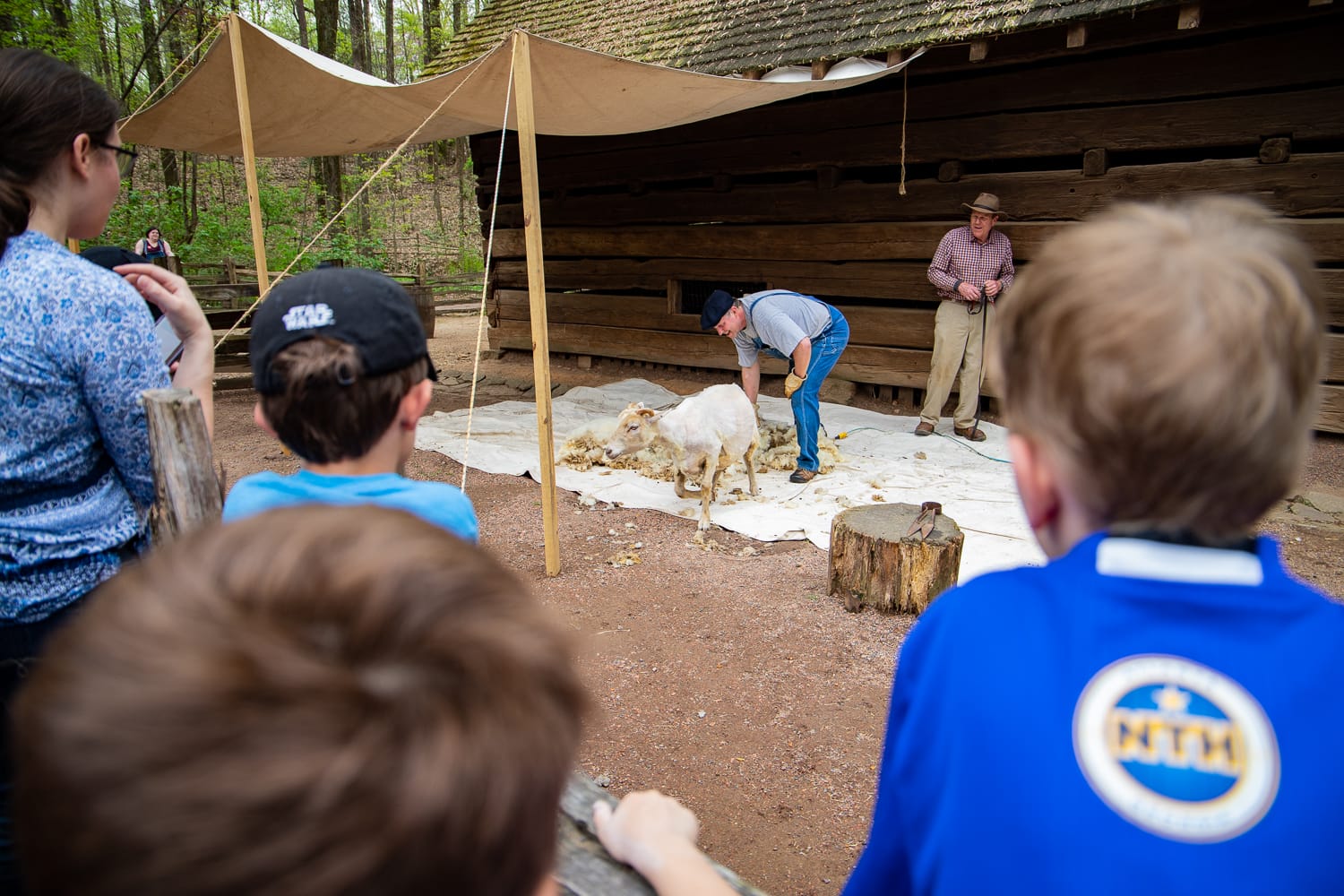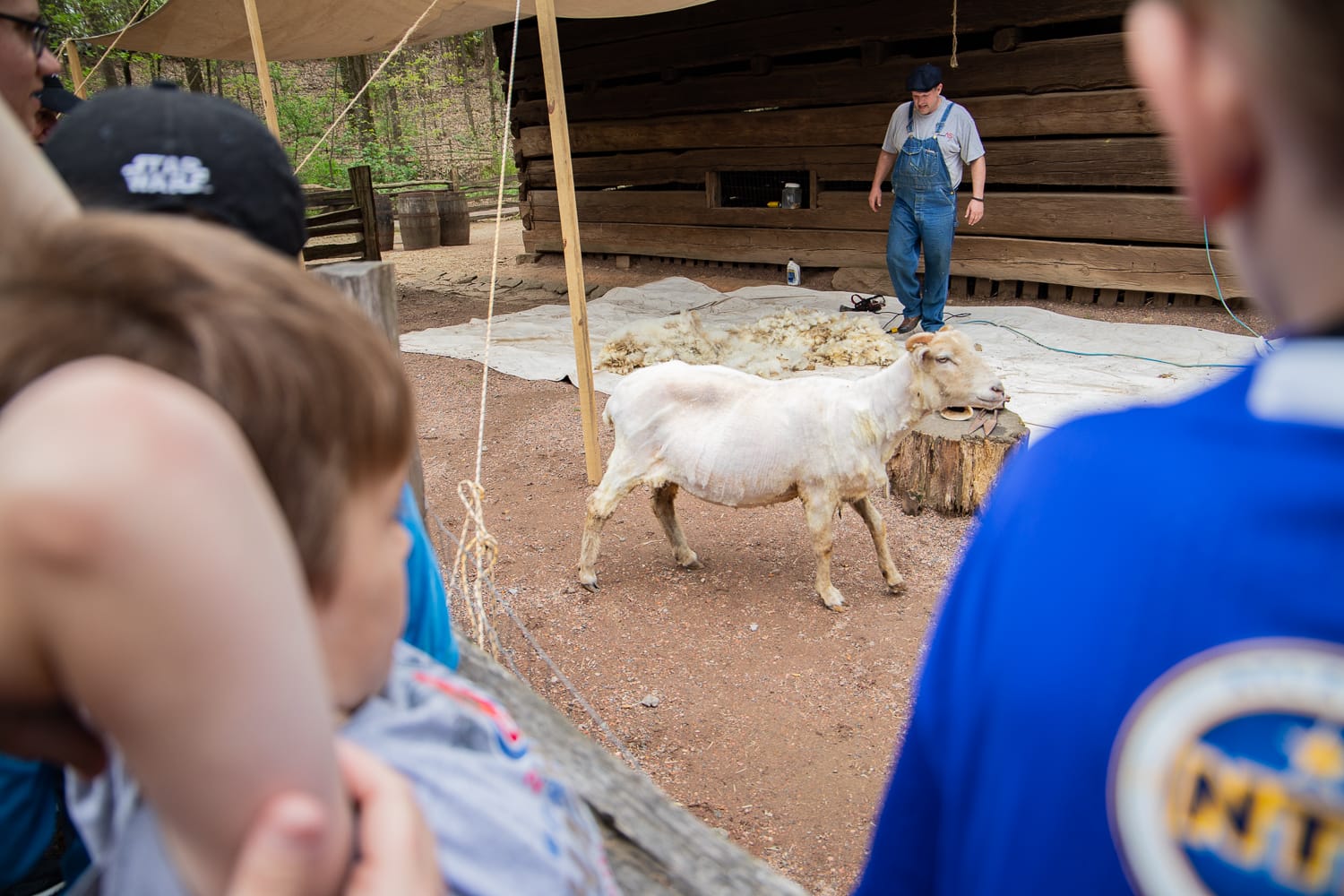As temperatures rise Atlanta History Center staff must be proactive in preparing the grounds and livestock for warm weather ahead. One such vital task is the shearing of the resident sheep whose coats have grown thick, matted, and dirty through the cold winter. On Saturday, April 6, crowds gathered around the split rail fence surrounding the sheep pen and watched as shearer Scott Fuss demonstrated the tools of the sheep-shearing trade. He held aloft a manual cutter, essentially a giant, rusty pair of scissors, and explained that in days past they would have to use manual force and precision to trim the wool. Luckily, modern advancements now allow him to use electric trimmers which he kept lubricated with motor oil.
Impatient baas echoed out from inside the barn as sheep waited for their turn under the blade. Though the sheep are resistant to the act of shearing it is necessary as these domestic breeds of sheep have been bred to grow thick, fluffy wool coats which can impede their movement and cause painful mats if left untreated. “The first step is to get him off balance,” explained Fuss as he used his weight to carefully maneuver the sheep onto its back. The large sheep – who weighed in at more than 100 pounds – tolerated the ordeal, his funny little legs sticking out all akimbo and occasionally flopping about as he tried to right himself. Kids asked questions as the shearer methodically worked his way from snout to tail on either side.
After all was said and done, the sheep, having lost its winter coat as well as its dignity, found its footing and proudly paraded around the pen showing off its summer trim. This annual event is a rare opportunity for children who may not have had many experiences with livestock or farming techniques to see what goes into preparing wool for use in cloth and linens elsewhere on the property.

